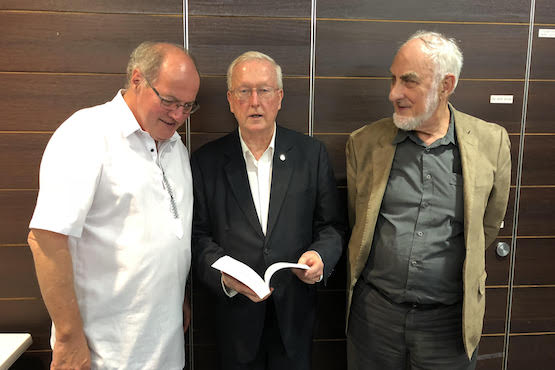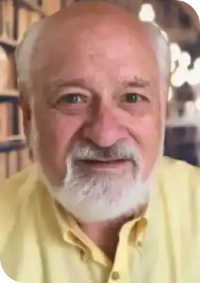
Father David Strong's work is essential reading for an informed perspective on Vatican-Beijing relations
Updated: February 20, 2018 10:46 AM GMT


Father Michael Kelly SJ, executive director of ucanews.com, with Father David Strong SJ, who wrote A Call to Mission: A History of the Jesuits in China 1842-1954, and Dr. Paul Rule, a Sinologist and historian of the early Jesuits in China. (Photo by Damien Nolan)
A first in publishing on China, A Call to Mission: A History of the Jesuits in China 1842-1954 was launched in Sydney on Feb. 19.
With 15 years' work on writing and researching over three continents by author Father David Strong SJ, the two volumes cover the second phase of the Jesuit engagement with China. Over that century, more than 1,200 European and North American Jesuits were joined by up to half that number of Chinese entrants to the order. They worked across China until the new communist government expelled the foreigners and imprisoned most of the Chinese.
Essential reading for an informed perspective on current Vatican-China negotiations, the singular merit of this work is the comprehensive nature of its coverage of the life of the Jesuits and the Catholic Church in the most convulsive century in Chinese history.
No less than six major eruptions of social and political unrest in this period ripped an ancient civilization out of cultural and political patterns that prevailed for over two millennia.
The author's access to the local impacts of these convulsions at a local level — through the diaries and letters of the Jesuits stationed across China — give the history a taste for what life was like in villages and cities.
China has loomed large in the imagination of the Catholic Church for 500 years and had been central to the missionary dream of the Jesuits for almost as long. However, only with this book's appearance has the detailed focus of attention shifted to the substantial and neglected period of Catholic and Jesuit engagement with China — the 112 years from the second arrival of the Jesuits in 1842 to 1954.
Polymath Matteo Ricci, astronomers Ferdinand Verbiest and Adam Schall von Bell and the exquisite painter who influenced Chinese painting beyond measure, Giuseppe Castiglione, have been written about, made much of and been the heart and soul of the first stage of Jesuit impact on China — in the 17th and 18th centuries. They brought Western learning and art to China and took Chinese language and literature to Europe.
The Jesuits were the first multinational to be welcomed in China and they came with a specific method of engagement — to make friends, build relationships and share their gifts before anything else was transacted, including conversations about Christianity. It remains an unsurpassed method of engagement with a rich and ancient people.
But the second arrival — from the 1840s — was very different. It was made possible by the arrival of European governments and traders, many of whom came not just for financial gain but to spread their "superior" religion.
This two-volume work by Father Strong is the first major treatment of the period from the arrival of the European and eventually American Jesuit missionaries under the protection of the so-called Unequal Treaties through to their expulsion after the communist victory in the long-running civil war in 1949.
To learn more, visit here.


